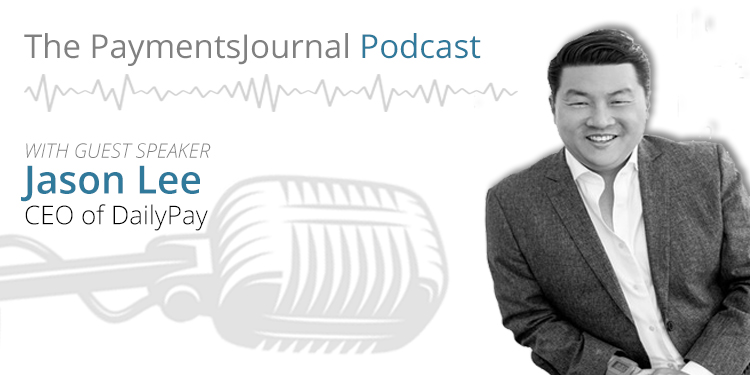Podcast: Play in new window | Download
Over the years, consumers have become accustomed to getting what they want when they want it, usually by doing no more than clicking a few buttons. They can watch new shows by the season, get same day shipping from marketplaces like Amazon, and order groceries online for immediate delivery.
So it makes sense that this desire for immediacy extends past commodities. Employers are beginning to implement a system referred to as on-demand pay, which is exactly as it sounds: pay day, any day. On-demand pay gives employees access to wages as they are earned.
The Consumer Financial Protection Bureau (CFPB) recently released an advisory opinion titled “Truth in Lending (Regulation Z); Earned Wage Access Programs,” which explains the nuances of earned wage access (EWA) and the complications of regulatory uncertainty.
To help simplify the document and discuss on-demand pay and early access to wages, PaymentsJournal sat down with Jason Lee, CEO of DailyPay.
The CFPB is defining boundaries
We know what on-demand pay is, but how do employees access it?
Well, it is typically done through a third-party provider, such as DailyPay. This third-party is the one distributing net pay, so the employer doesn’t have to go through the process of running the actual payroll. “That’s really the value that [DailyPay is] adding,” remarked Lee.
But when money goes out, that money must be returned. There are two models that highlight how this return happens:
- The employee doesn’t pay anything back, and a settlement happens behind-the-scenes with the use of advanced technology. This is the preferred method of DailyPay.
- Repayment from the employee. This is like a direct payback through an employee-authorized payroll deduction or withholding.
So what’s the CFPB got to do with this? “The CFPB opinion really clarified that that second set of models—or that second set of earned wage access, if structured in accordance with a number of different provisions, including no fees associated with it—[is] not a lending transaction,” said Lee.
The analysis from the CFPB determined that if the employee is repaying the vendor from which they are receiving the funds, even if it’s through a payroll deduction, the analysis from the CFPB determined that, if there are no fees or low fees associated with the transaction, and so long as several other criteria are met, then it does not qualify as a credit or a borrowing transaction.
Seven factors for assessing EWA
In the advisory opinion, the CFPB created a qualifying rubric outlining seven elements on which it is basing its analysis of early access to wages. The terms require employer integration, verification using employer-based data, payroll integration, no employee account debiting, no tips, and other things direct to consumer (D2C) players can never do.
“The methodology of payback in wage deduction models is through a payroll deduction directed or authenticated by the actual employee,” remarked Lee. While models dependant on wage deductions look like borrowing transactions (i.e. the employee is directing a repayment of something), so long as there are no fees, the employer verifies the employee’s data, the employee can select the destination account for on-demand pay, and the employee’s account is not debited,the CFPB would not consider the transaction a credit or borrowing transaction.
But generally, the CFPB lays out a framework that is generally supportive of employer-integrated on-demand pay. Fundamentally, the workers have already earned the wages they are gaining access to, and this is the primary differentiator between on-demand pay and tapping into a line of credit.
Fees associated with early access to wages earned
The CFPB opinion piece talks about fees quite a bit. But what exactly do they mean by fees?
“I think it’s similar to a transaction processing fee,” explained Lee. As with an ATM withdrawal, earned wages is a withdrawal of funds that already exist, but to process those funds, there are associated fees that need to be covered. So in order to convert that money into usable funds, employees may also have to pay a nominal processing fee.
And most of us would agree that a few dollars for the withdrawal of cash is reasonable. But I think [the CFPB has] been intentionally vague,” concluded Lee. “And I would suspect that the ambiguity was intentional, to ultimately be clarified through future action or rulemaking.”
What are DailyPay’s thoughts on the opinion?
DailyPay created the on-demand payment industry, and it set the ground work for the practices championed in the opinion’s framework..
However, “our model is not really covered by this [opinion] in the sense that we’ve never required repayment from the employee,” clarified Lee. And DailyPay has never considered itself to be a credit instrument because a credit instrument, by definition, requires repayment. Therefore, there has never been any ambiguity on the services being offered.
“But I think as a general matter, it’s a good thing,” insisted Lee. “I think this clarifies that transactions, like the ones that are being described by this set of heuristics, are ‘not credit.’”
